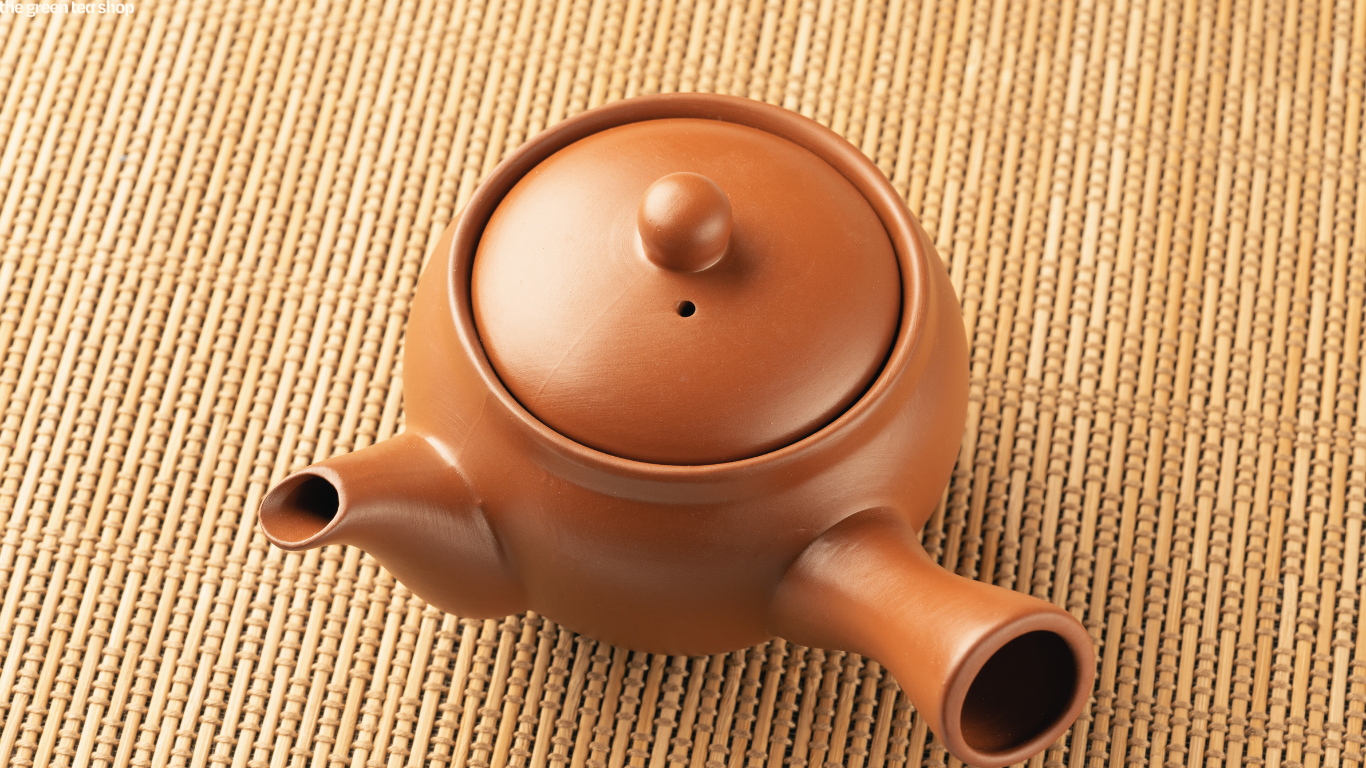How do you brew Japanese green tea?
Although a strainer and a mug may be all you need, there’s something very satisfying about using the right equipment. In Japan, a traditional teapot called a kyūsu (急須, pronounced queue-sue) is often used to brew green tea.
What is a Kyūsu?
You might wonder, how is a kyūsu any different from a regular teapot? Well, there are mainly two reasons that makes a kyūsu so special.
The first reason is its size and shape. A kyūsu typically has a capacity of 300ml - 400 ml (10oz - 13oz) and is shaped so that you can immerse all the tea leaves and still have enough space for them to expand fully and release their flavours.
Kyūsu teapots have another great feature: they drain tea very effectively. This keeps the leaves from getting mushy and bitter, resulting in leaves that stay fresh longer and continue to release great flavours for consecutive brews.
It is a must-have item for any serious Japanese tea enthusiast. But if you're new to tea, you might be wondering how to use one properly. Keep reading for tips on how to care for your own kyūsu.
Everyday cleaning
After you have finished using your kyūsu, rinse it under running water to remove tea leaves and excess liquid. Then, pat it dry with a cloth, and let it air dry completely before storing it away. It's that easy!
For more through care, there are slight differences according to the material of your kyūsu.
Deep cleaning
Porcelain Kyusu
Porcelain is a material that is used to make many of the tableware items you use every day. You probably have a good idea for how to care for them, since you use them all the time. The good news is that caring for porcelain is easy!
Porcelain is a smooth material that doesn't absorb scents or flavours as ceramics, which makes it ideal for people who like to brew many types of teas.
It is dishwasher-safe and bleach-safe too, so it's a great choice for people who prefer easy care and like to have a kyūsu that sparkles. However, it's best to avoid harsh chemicals until necessary, and always make sure to rinse thoroughly afterwards so that it won't affect the flavour of your tea.
The downside of porcelain teapots is that they cannot retain heat as well as ceramic. However, you can overcome this by preheating your kyūsu with hot water before adding the tea leaves.
Ceramic Kyūsu
Ceramic kyūsu are popular in Japan, and for good reason: the clay used in their production can absorb the bitter and astringent compounds of tea, making it sweet and mellow. The most famous ceramic teapots come from Tokoname (常滑), a city in Aichi Prefecture.
Ceramics are porous, so it's best to use only one type of tea in them so that the flavours from one type don't mix with others.
Ceramic teapots require a little more care than other porcelain teapots. They can't be put in the dishwasher, so you'll need to hand wash them. Never use dish soap, bleach or any other cleaning agent on them because these chemicals can leach into your tea.
If you're bothered by the tea stain, you could gently scrub it with a melamine sponge, but even that can be a little rough. Rinsing it immediately after use will help keep stains at bay, and drying it thoroughly will keep mold from growing inside.
Ceramic teapots are a good choice for those who stick to one type of tea and enjoy the cleaning ritual.
---
Keeping your kyusu clean and well-maintained will extend its lifespan and ensure that it continues to brew delicious tea for many years to come!
